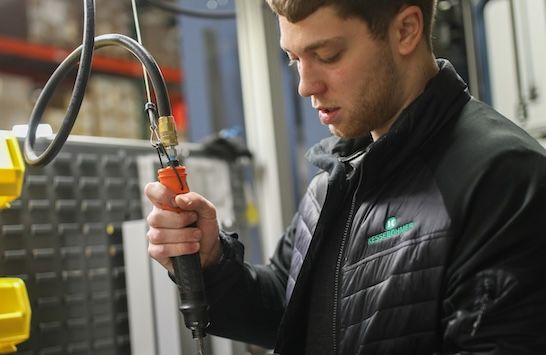Blog
Clean power plan: How public policy affects manufacturing

Part 3 of our series on How Policy Affects Manufacturers explores changes to the Clean Power Plan. Announced in August 2015 by President Obama and the Environmental Protection Agency (EPA), the plan focused on reducing carbon pollution from power plants. It included customized goals for cutting carbon pollution within individual states and for the country as a whole. “It also shows the world that the U.S. is committed to leading global efforts to address climate change,” according to the EPA. Recent political changes, however, have put the Clean Power Plan on the back-burner, but many manufacturers continue to stick to their pledge as significant benefits can be found in the bottom line.
Upon the initial announcement, many key players in the manufacturing sector were enticed by the Clean Power Plan and found the benefits far outweighed the disadvantages. Advantages such as taking a lead role to lower carbon emissions, decreasing energy usage, and reducing carbon pollution from the power sector to 32 percent, below 2005 levels.
According to the EPA, the Clean Power Plan itself is projected to contribute significant pollution reductions, resulting in important benefits, including climate benefits of $20 billion, health benefits of $14-$34 billion, and net benefits of $26-$45 billion.
Manufacturers pledge clean power plan for bottom-line benefits
Although the newly elected republican party has put this plan on hold, some of the nation’s largest manufacturers are sticking to the climate pledges they’ve made over the last few years. Why? It's not just a great cause - it helps the bottom line. Lower carbon emissions reflect less energy use, which saves money. The moves also counter activist pressure and position the companies against a risk to their future profits from the effects of climate shifts on factories and markets, according to a Bloomberg report.
Companies that signed the pledge and continue to support climate-change policies include Amazon, Apple, Best Buy, General Electric, Google, Ikea, Levi Strauss, Mars, Microsoft, Nestle, Pepsi, and Procter & Gamble, among others. As the nation's largest retailer, Wal-Mart was one of 81 large companies that signed a pledge to cut its carbon emissions. Cutting carbon emissions is “good for the business, our shareholders, and customers," Wal-Mart spokesman Kevin Gardner said.
3 tips: Driving the clean power plan in manufacturing

(Infographic Credit: fedgreen.org)
In 2015, Wal-Mart was one of 81 companies that promised to reduce emissions in the run up to the Paris global climate negotiations. The company upped its targets last November, saying it would get half its power from renewable sources by 2025. Here are three ways manufacturers can initiative alignment with the Clean Power Plan:
1. Complete an audit
The current U.S. president may have signed an executive order to dismantle, halt, and/or slow down many climate policies that have been years in the making, including the Clean Power Plan, but that doesn’t mean our attention to clean air and lower emissions needs to stop. Companies can continue to use sustainable business practices, despite political maneuvering. Conducting an audit of your operation's carbon emissions will give you full visibility of the plant's footprint, allowing you to build a plan for the future. Start small and begin to implement change.
2. Purchase renewable energy
It is affordable, reliable, and consistent with sound business practices. A recent Environmental Defense Fund report describes how Comcast identified ways to cost effectively eliminate more than 6,000 metric tons of annual carbon pollution by scaling its investments in energy efficiency over three years. This is just one way manufacturers can take the initiative and begin acting and operating more sustainably.
3. Enhance climate resilience
Adapt, reorganize and evolve operation configurations that improve sustainability. Establishing new technologies inside the operation can be used as a gateway to larger projects. For example, equipment used within facilities can shift to electric-powered instead of propane powered. Technologies like autonomous mobile robots for material transport offer 0 emissions.
As the nation waits to see how the uncertainty swirling around the Clean Power Plan plays out, many manufacturers will continue to find new ways to operate more sustainably, despite President Trump’s promises to repeal some or all of the act’s provisions. By developing and using solutions that promote clean energy and resistance to climate change, for example, we can all help to develop a “low-carbon” economy while protecting our planet today, and well into the future.







